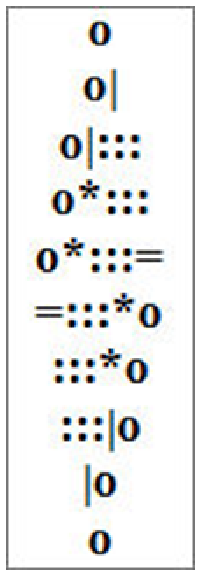|
Page 39.

"What is that bloody thing?" Tatnall said as the two Brits stood looking at a thing resembling a railroad car but streamlined, in a manner not yet known at the time.
"Looks a bit like a bullet," Wells said.
I pointed to the symbols on its side. "We've seen that before." It was the enigmatic diamond-shape one encounters in every Temporale transfer station.

"What does it mean?" Wells asked.
Sindi spoke up: "We have no idea. I think it has some sort of navigational significance, maybe—" She suddenly clamped up as Trini nudged her, and I knew she'd been about to say 'in outer space.' That's all these two gentlemen needed. But it was too late.
They whirled and regarded us with faces as pale as the snow at their feet. "Among the planets?" they said. Wells said 'planets' and Tatnall said 'stars.' Same idea.
"You really have come from Mars," Wells said marveling.
Tatnall hesitated whether to raise or lower his gun. "It's like sitting with ghosts and not knowing it. We've been socializing with those, what does Jean Reynaud call you, 'people of the air.'
"We are flesh and blood like you," said the practical Trini. "Now come inside before we have to wrap you in blankets."
"I want to explore that thing," Tatnall said excitedly. He rushed past us and, while the rest of us returned to the table, he dressed warmly and hurried outside with a tool box in one hand and a carriage lantern in the other.
"Don't damage it!" Wells and I both shouted after him.
"I wouldn't dream of it," said Tatnall.
We went inside and sat around the table. Wells said: "So, Martians, how are things on Mars?"
What played out was a conversation of loose ends. Not only were there holes in our knowledge, but we had no idea what it was we didn't know. At the same time, Wells could not have foreseen fixed wing flight, much less space travel and much else besides. Give him plenty of credit, while asking why: he mentions in The Time Machine (1884) that time is a fourth dimension, beating Einstein to the punch by 21 years or so. In the same vein, Wells' agile mind quickly leapt from the slowly disintegrating half-life of radium, discovered in the 1890s, to the idea that if all the energy could be dissipated at once, you'd have an atomic bomb. That inspired leading physicists around the world to start building one, on a path that led to Hiroshima and Nagasaki in 1945. So the conversation ended with Wells thinking we had come from the Red Planet of his day, and we didn't realize that Wells and his universe had perished more than twenty centuries before our time.
The important thing was that we agreed to keep our presence a secret for now. Wells actually was eager to publish something, anything, but he deferred to the older Tatnall—luckily. This was also the age of the Hague Peace Conferences, in whose na´ve and social optimism a sincere effort was made to abolish the progress of warfare. Until that point, men had largely met on the field of battle and beaten each other with clubs or stabbed each other with sharp objects. In recent centuries, they could also shoot each other with things that went pop. The trouble was that the things that went pop got bigger and bigger and went boom. Forward thinkers like the Fabians and other proto-hippies wanted to avoid those things going from boom to KA-BOOM or worse.
Therefore, when Tatnall walked in a few hours later, muddy and dirty but grinning from ear to ear, and announced he had a time machine in his backyard, the immediate consensus was to keep mum about it. We all shook on that, and kept our word, and we have kept our word to this day.
TOP
|
MAIN
Copyright © 2018 by Jean-Thomas Cullen, Clocktower Books. All Rights Reserved.
|